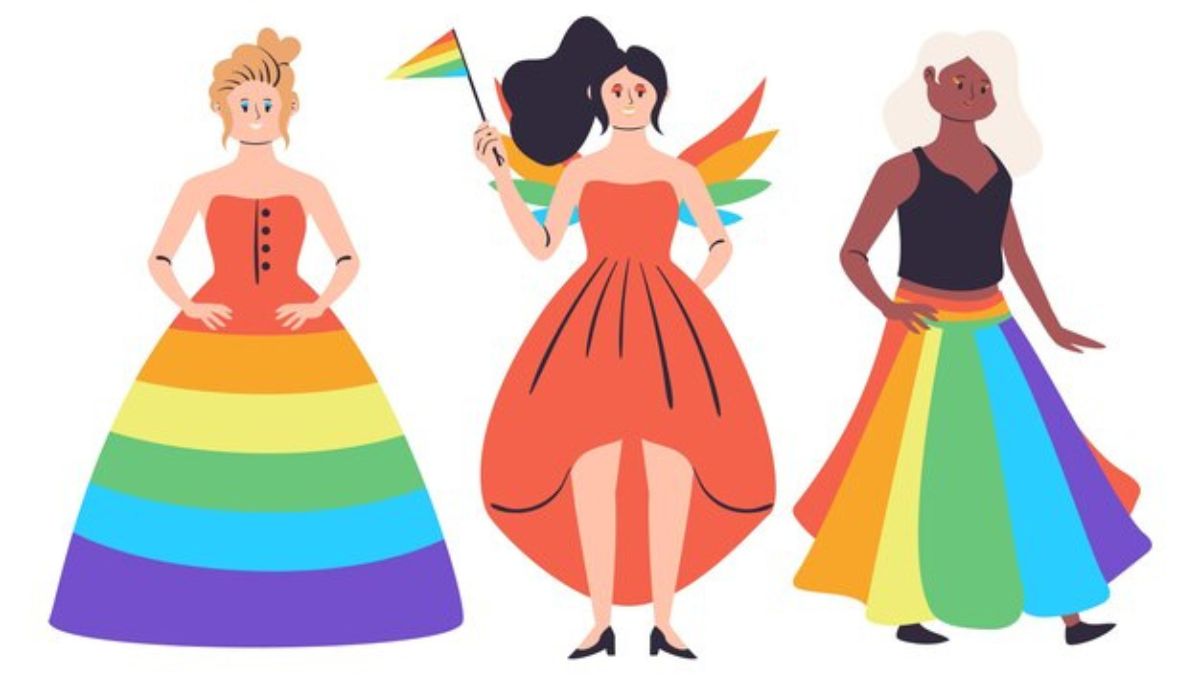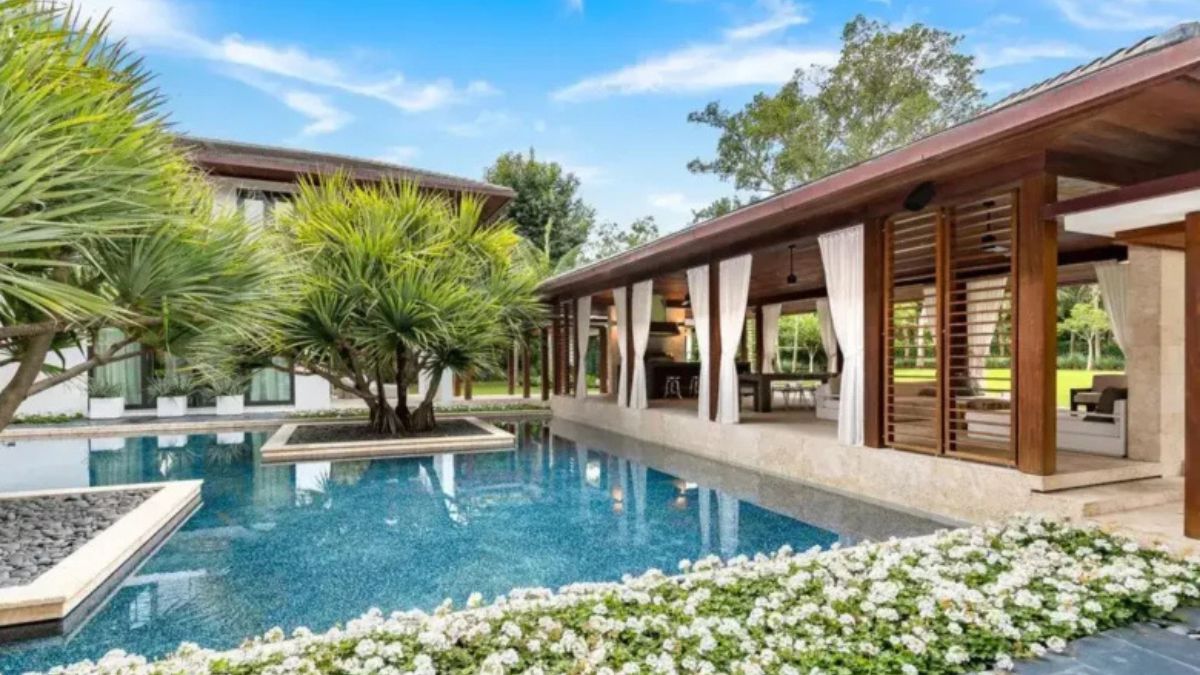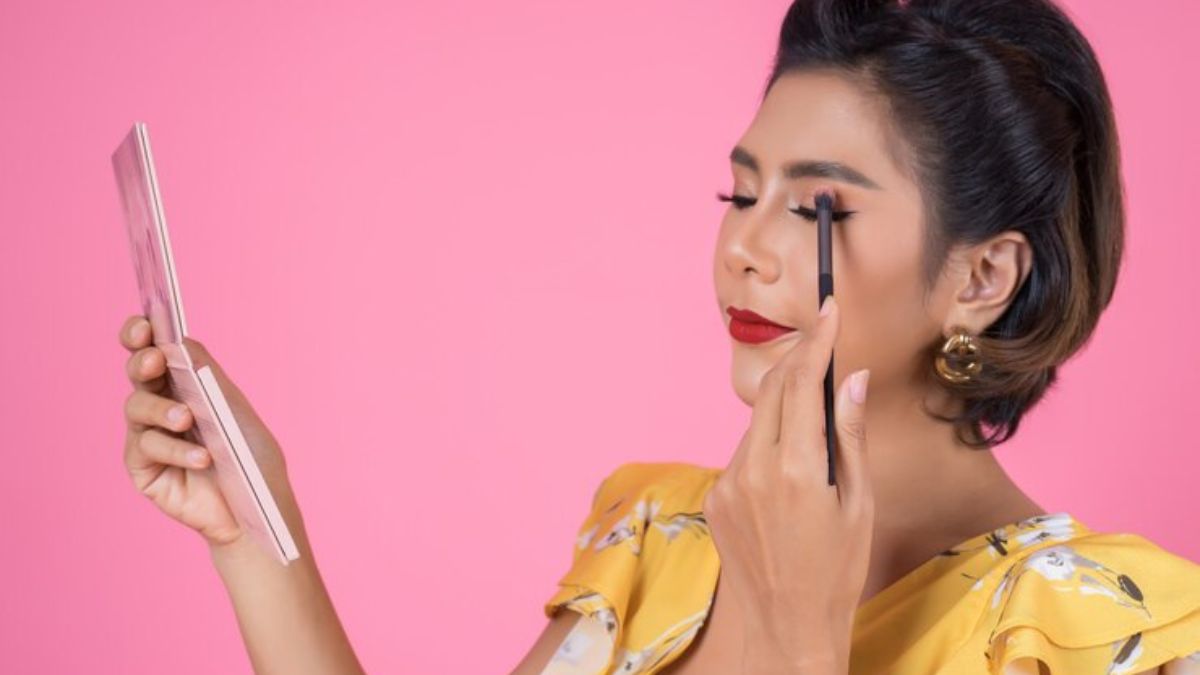Fashion
Tracing the Threads: The Fascinating origins dresses Through History

Origins Dresses have always held a special place in the tapestry of human history. From ancient civilizations to modern runways, these garments tell stories beyond mere fabric and thread. They reflect societal norms, cultural shifts, and personal expressions that transcend time. The origins of dresses reveal much about the people who wore them—what they valued, how they lived, and their aspirations.
As we embark on this journey through time, we’ll explore how dresses have evolved from simple pieces into symbols of status and identity. Each era brought its unique designs and styles that captured the essence of the times. Let’s unravel this captivating narrative together as we trace the threads connecting us to our past through fashion!
Ancient Dresses: From the Egyptians to the Romans
In ancient civilizations, Origins Dresses were not merely for adornment but served as symbols of status and culture. The Egyptians crafted garments from linen, designed to keep cool in the scorching sun. Their flowing sheath dresses often embraced vivid colors and intricate beading.
As we journey into Greece, tunics known as chitons emerged. They draped elegantly on the body, showcasing a simple yet refined aesthetic that highlighted natural beauty.
The Romans took inspiration from their predecessors but added their unique twist. Stolas became popular among Roman women; these long gowns featured an array of fabrics and embellishments. Drapery was key—how fabric fell transformed each dress into a work of art.
Throughout this era, accessories like sandals and jewelry completed the look, further elevating social standing. Each stitch told a story about identity and heritage within these vibrant cultures.
You may like also:Unveiling Worty34: The Journey of a Digital Pioneer
Medieval Dresses: From Simple Tunics to Elaborate Gowns
During the medieval era, Origins Dresses evolved significantly. Peasant women often wore simple tunics made from wool or linen. These garments were practical and allowed for ease of movement while working in fields.
As society progressed, so did fashion among nobility. Layers became essential, with undergarments like chemises worn beneath more elaborate gowns. Nobles flaunted their wealth with rich fabrics such as silk and brocade.
Colors played a vital role too. Bright hues indicated status; only the wealthy could afford vibrant dyes derived from rare sources. Embroidery adorned many pieces, showcasing intricate designs that told stories of lineage and power.
Sleeves transformed dramatically over time as well—growing longer or flaring out into extravagant shapes that mirrored the wearer’s social standing. The silhouette of these gowns began to reflect not just beauty but also practicality within courtly life.
Every detail mattered during this captivating period in dress history, influencing how identity was expressed through fabric and form.
Renaissance Dresses: A Time of Opulence and Luxury
The Renaissance era, spanning from the 14th to the 17th centuries, marked a dramatic shift in fashion. It was a time when creativity flourished and beauty took center stage. Dresses became canvases for artistic expression.
Fabrics like silk and velvet adorned noblewomen, often embellished with intricate embroidery and jewels. Colors were vibrant, signaling wealth and status. Deep reds, greens, and golds dominated wardrobes.
Silhouettes changed as well. The introduction of fitted bodices emphasized an hourglass figure while flowing skirts created an aura of elegance. Sleeves puffed out dramatically; they weren’t just functional but also showcased craftsmanship.
Accessories played a crucial role too—ornate headdresses completed the look of opulence that defined this period. Women reveled in their appearance as social gatherings turned into showcases for fashion prowess.
Renaissance dresses embodied not only style but also cultural ideals of beauty during a transformative age in history.
Victorian Era Dresses: Corsets, Bustles, and Hoop Skirts
The Victorian era, spanning from 1837 to 1901, was a time of dramatic transformation in fashion. Dresses became symbols of social status and femininity. Corsets emerged as essential undergarments, designed to shape the waist and enhance an hourglass figure.
These tightly laced garments dictated not just how women looked but also how they moved. Breathing was often secondary to beauty during this period.
Bustles made their grand entrance later in the century, adding volume at the back of dresses. This style created a striking silhouette that emphasized curves while allowing for movement.
Hoop skirts were another hallmark of Victorian fashion. They provided structure and fullness, giving gowns their iconic bell shape.
Rich fabrics adorned with lace and intricate embellishments further illustrated wealth and taste. The Victorian dress encapsulated both elegance and restriction—an intriguing dichotomy that defined women’s lives at the time.
1920s Flapper Dresses: Breaking Free from Tradition
The 1920s marked a pivotal shift in fashion and societal norms. Flapper dresses emerged as symbols of liberation for women eager to express their newfound independence. These knee-length garments celebrated freedom through movement, reflecting the spirit of the Jazz Age.
Characterized by loose silhouettes and dropped waistlines, flapper dresses embraced a more relaxed aesthetic. They often featured intricate beadwork and fringe, capturing the essence of dance halls filled with lively music. Women adorned themselves with cloche hats and long pearls, creating an iconic look that challenged traditional femininity.
Beyond aesthetics, flappers represented defiance against restrictive conventions. This era encouraged women to break away from corsets and rigid styles that defined previous generations. The flapper dress became a statement piece—a celebration of youth, rebellion, and modernity in an evolving world where boundaries were fading fast.
Evolution of Dress Styles in the 20th Century
The 20th century witnessed an extraordinary transformation in dress styles. The early years were characterized by a departure from restrictive garments. Women began to embrace comfort and freedom, leading to the rise of simpler silhouettes.
As decades unfolded, iconic styles emerged. The 1920s introduced flapper dresses that symbolized liberation and rebellion against tradition. Jazz music laid the backdrop for this bold fashion statement.
In contrast, the 1950s brought about full skirts, cinched waists, and glamorous elegance inspired by Hollywood icons. Fabrics became more experimental as designers pushed boundaries with vibrant patterns and textures.
The late 20th century saw punk influences challenging norms. Bold colors and unconventional designs reflected a culture eager for change. Streetwear also surged, blending casual attire with high-fashion sensibilities.
This era marked significant shifts not just in style but also in societal attitudes toward gender roles and identity through fashion choices.
Conclusion:
The journey through the history of dresses reveals more than just fashion trends. It uncovers stories, cultures, and societal shifts that have shaped our world.
Each era introduced distinctive styles reflecting values and ideals. From the flowing linens of ancient Egypt to the structured elegance of the Victorian age, dresses tell tales of their time.
As we move towards modern designs, the evolution continues. Today’s dresses embody freedom and individuality while still drawing inspiration from historical influences.
Understanding these origins enriches our appreciation for what we wear now. Every dress carries a piece of history worth exploring further.
FAQ’s:
What is the origin of dresses?
Dresses have been worn for centuries, evolving with each civilization. The earliest forms can be traced back to ancient cultures like Egypt and Mesopotamia.
How did dress styles change throughout history?
Dress styles transformed significantly over time due to various factors including social class, available materials, and cultural influences. For instance, medieval dresses were often practical while Renaissance gowns showcased wealth through intricate designs.
When did women start wearing pants instead of dresses?
The shift toward women wearing pants began in the late 19th century but gained momentum during World War I when practicality became crucial. By the 1920s, flapper styles challenged traditional norms further.
What influences today’s dress trends?
Today’s fashion draws inspiration from past decades combined with modern technology and social movements. Sustainability has become a key focus as consumers seek eco-friendly options that reflect their values.
Are there specific fabrics that define different eras in dress history?
Absolutely! Different periods favored specific textiles—linen was common in ancient times; silk dominated during the Renaissance; cotton became popular in Victorian clothing due to industrialization advancements.
By examining these questions about origins dresses throughout history, we gain insight into how our attire continues shaping identity across generations.
Fashion
Andre Hakkak’s House: A Journey Through Design and Inspiration

Andre Hakkak’s House is a name that resonates in the world of innovative design. Known for his ability to blend functionality with artistic flair, he has made a mark that goes beyond mere aesthetics. His house stands as a testament to his vision—a harmonious space where every corner tells a story. Each room reflects not just style but also deep-rooted inspiration drawn from various aspects of life and culture.
As you step into Andre Hakkak’s house, you’re welcomed by an environment that feels alive. It’s more than just walls and furniture; it’s about creating experiences. This journey through his home will unveil the creative processes behind its design, offer insights into sustainable choices, and showcase how this unique space impacts both its inhabitants and the broader community.
Join us as we explore what makes Andre Hakkak’s house not only an architectural marvel but also a source of inspiration for many aspiring designers!
The Inspiration Behind Andre Hakkak’s House
Andre Hakkak’s house is a testament to his diverse inspirations. Nature, art, and culture collide in every corner of this unique space.
The surrounding landscape plays a crucial role. Hakkak drew from local flora and fauna, weaving them into the architecture. Large windows frame breathtaking views, inviting the outdoors inside.
Art also heavily influenced his design choices. Each room features carefully curated pieces that reflect both contemporary trends and timeless classics. These artworks breathe life into the home.
Cultural heritage cannot be overlooked either. Andre incorporates elements from various traditions, creating an atmosphere that feels both global and intimate.
Every inch tells a story; each detail reflects his journey as a designer. The result is not just a house but an embodiment of Hakkak’s creative spirit—an inspiring blend of influences that invites exploration at every turn.
You may like also:Unlocking the Secrets of Megacaching.com: Your Ultimate Guide to Mega Geocaching Adventures
The Design Process
The design process of Andre Hakkak’s house is a tale of creativity meeting practicality. It began with a vision—an idea rooted in harmony with nature and community.
Hakkak focused on blending modern aesthetics with functional spaces. Every room was carefully planned to ensure maximum natural light flooded through expansive windows. This connection to the outdoors fosters tranquility within the home.
Collaboration played a crucial role in shaping the design. Architects, designers, and artisans came together to exchange ideas and refine concepts. Each decision reflected Hakkak’s dedication to quality craftsmanship.
Sustainability influenced every step too. From initial sketches to final touches, eco-conscious choices were prioritized throughout the process. The result is not just a house but an inspiring environment that encourages well-being for its inhabitants and respects its surroundings.
Key Features and Elements of the House
Andre Hakkak’s house is a stunning blend of modern architecture and innovative design. Its open floor plan creates an airy feel, seamlessly connecting interior spaces with the surrounding landscape.
Large windows flood each room with natural light, offering breathtaking views of nature. The incorporation of outdoor living areas extends the home’s usable space while fostering a harmonious relationship with the environment.
The use of geometric shapes adds visual interest to the structure, drawing attention to its unique silhouette. Inside, custom-built furniture showcases artisanal craftsmanship that complements the overall aesthetic.
Attention to detail is evident in every corner. From eco-friendly lighting fixtures to smart home technology, each element reflects Andre’s commitment to sustainability and functionality.
This house is not just a residence; it’s a canvas for creativity and innovation in design.
The Use of Sustainable and Eco-Friendly Materials
Sustainable and eco-friendly materials play a crucial role in Andre Hakkak’s house design. Each choice reflects a commitment to the environment, blending beauty with responsibility.
Bamboo flooring offers durability while being renewable. Its rapid growth makes it an ideal choice for eco-conscious builders. Reclaimed wood beams add character, showcasing history and artistry without depleting resources.
Natural insulation materials like sheep’s wool maintain comfort while minimizing energy consumption. These choices reduce waste and promote air quality, enhancing the living experience.
Hakkak also incorporates recycled metal elements throughout the structure. This not only strengthens the design but also reduces landfill contributions.
By prioritizing these materials, Andre Hakkak creates spaces that inspire others to consider their environmental impact. His approach demonstrates how thoughtful choices can lead to stunning aesthetics without compromising sustainability.
Impact on the Community and Future Projects
Andre Hakkak’s house transcends mere architecture; it serves as a catalyst for community engagement. Local residents often gather for events hosted in the home’s spacious, inviting areas. This fosters connections that strengthen neighborhood ties.
The design doesn’t just focus on aesthetics. It showcases how thoughtful architecture can influence social dynamics. As people come together, they share ideas and experiences, creating a vibrant atmosphere of collaboration.
Looking ahead, Hakkak is committed to integrating sustainable practices into future projects. His vision includes designing spaces that not only enhance community life but also prioritize environmental responsibility.
By championing eco-friendly initiatives, he encourages others in the industry to follow suit. This ripple effect may inspire aspiring architects and builders to rethink their approach to design and construction. The impact of his work extends beyond the physical structure—it’s about nurturing relationships and shaping a better tomorrow through innovative living environments.
Andre Hakkak’s Legacy in Design
Andre Hakkak has etched his name in the world of design with an innovative approach that transcends traditional boundaries.
His emphasis on merging aesthetics with functionality sets a benchmark for aspiring designers. Each project he undertakes reflects a deep understanding of space and environment, showcasing his ability to create harmonious living spaces.
Hakkak’s commitment to sustainability further amplifies his legacy. By championing eco-friendly materials, he inspires others to rethink their design choices and prioritize environmental impact.
Through workshops and mentorship programs, he nurtures emerging talent. His influence extends beyond individual projects; it shapes future generations of architects and designers who aspire to make meaningful contributions.
The Andre Hakkak house embodies this ethos—serving as both a masterpiece and a learning platform for those passionate about design innovation.
Conclusion
Andre Hakkak’s house is more than just a structure; it’s a narrative woven into the fabric of contemporary design. Each corner tells a story, reflecting his vision and ethos.
His commitment to sustainability resonates through every detail. This approach not only enhances aesthetics but also serves as an inspiration for future architects.
The community around him feels the ripple effects of this thoughtful design. It fosters connections and encourages others to think about their own spaces.
Hakkak’s work will inspire generations to come. His legacy isn’t just in buildings but in the belief that homes can be beautiful, functional, and respectful of nature.
As we explore innovative designs today, Andre Hakkak’s influence remains palpable—a guiding light for those who dare to dream big with purpose.
FAQs
What inspired Andre Hakkak’s house design?
Andre drew inspiration from nature and the surrounding landscape. His vision was to create a space that harmonized with its environment, blending indoor and outdoor living.
Are sustainable materials used in the construction of Andre Hakkak’s house?
Yes, sustainability is at the core of his design philosophy. The house features eco-friendly materials that minimize environmental impact while offering durability.
How does Andre Hakkak’s work influence future projects?
His innovative approach promotes a greater focus on sustainability and community engagement in architecture. Future designers look up to his methods for creating inclusive spaces.
What are some key features of Andre Hakkak’s house?
The house includes open-concept living areas, large windows for natural light, green roofs, and energy-efficient systems—all aimed at fostering comfort and well-being.
Has the community responded positively to Andre Hakkak’s designs?
Absolutely! His commitment to environmentally friendly practices has garnered admiration from both residents and fellow designers alike. They appreciate how he integrates beauty with functionality.
Can I visit or tour Andre Hakkak’s house?
While private residences typically aren’t open for public tours, special events may occasionally showcase his work. Keep an eye out for announcements regarding exhibitions or open houses!
Does Andre have other notable projects apart from this residence?
Yes, he has worked on various influential architectural projects that emphasize modern design principles integrated into everyday life while maintaining a strong connection with nature.
Fashion
The Art of Designing an Engaging Magazine

In the ever-evolving world of publications, designing an engaging magazine is both an art and science that captivates readers and keeps them coming back for more. While the aesthetics of a magazine are essential, its success hinges on various components that work together to create an immersive experience. From understanding your target audience to incorporating modern design trends, each element is crucial in crafting a stunning and profoundly engaging magazine. This article delves into these vital aspects, offering insights into the art of magazine design.
Key Takeaways:
- A successful magazine design revolves around understanding your audience.
- Crafting balanced layouts, compelling typography, and strategic imagery is essential.
- Incorporating modern trends and technology enhances reader engagement.
Table of Contents:
- Understanding Your Audience
- Crafting a Compelling Layout
- The Power of Typography
- Choosing the Right Imagery
- Incorporating Modern Design Trends
- The Role of Technology in Design
- Testing and Feedback
- Final Thoughts on Magazine Design
Understanding Your Audience
The journey of magazine design begins with a thorough understanding of the audience you intend to captivate. Tailoring content and visual aesthetics to suit the preferences of your target demographic is crucial. This involves delving into the readers’ age, interests, and lifestyles. Doing so allows you to craft content that resonates, creating a connection that engages them. For instance, a fashion magazine targeting millennials might incorporate vibrant colors and trendy typography, while a business magazine for executives may utilize a sleek, professional design. Additionally, collaborating with magazine printers can enhance your publication’s overall quality and presentation. Moreover, engaging with your audience through surveys and social media can provide deeper insights, helping refine your approach continuously.
Crafting a Compelling Layout
Layout design is pivotal in the reader’s journey, guiding their eyes effortlessly across the page. A successful layout combines visual appeal with functional readability. Elements like white space, alignment, and structure should be purposefully used to prioritize information and enhance comprehension. Consistent navigation and visual hierarchy help readers focus on essential content, making their experience more seamless and enjoyable. Consider how interactive features can add to a dynamic reading experience, especially in digital formats. Engaging layouts can evoke emotions and stimulate curiosity, encouraging readers to delve deeper into the content.
The Power of Typography
Typography significantly impacts how your content is perceived and understood. A thoughtfully chosen font can imbue the magazine with personality, setting the tone for the content. Serif fonts may be ideal for conveying sophistication, while sans-serif fonts can project modernity and simplicity. Consistent use of typography across the magazine ensures visual harmony and aids readability. Well-placed typographical variations can effectively highlight particular sections or calls to action, drawing attention to critical points without overwhelming the reader. Typography communicates the written word and conveys mood and emotion, making it a decisive element in audience engagement.
Choosing the Right Imagery
Imagery is a potent storytelling tool within a magazine, breaking language barriers and sparking emotions. Selecting the right images involves more than aesthetics; it’s about alignment with the narrative. Compelling imagery complements the text and provides context, enhancing the reader’s understanding. It shouldn’t overwhelm the content but be a visual anchor that enriches the storytelling. A balanced combination of images and text ensures neither element dominates, maintaining reader engagement throughout the publication. Images can evoke emotions, making stories more relatable and creating a lasting impact on the reader.
Incorporating Modern Design Trends
Staying abreast of design trends is vital for keeping a magazine’s appeal fresh and relevant. Trends such as minimalism, bold colors, and dynamic interactions can reinvigorate a publication. However, adopting trends that align with your magazine’s core message and audience is critical. Use trends to enhance, not overshadow, the magazine’s content. Selectively integrating trends ensures your magazine retains its unique voice while engaging contemporary readers who appreciate innovation and style. With the rapid pace of design evolution, it’s essential to evaluate which trends add value to your publication continuously.
The Role of Technology in Design
Technological advancements have dramatically transformed magazine design, opening doors to creative possibilities previously unimaginable. Design software such as Adobe Creative Suite offers expansive tools for crafting intricate layouts and integrating multimedia elements. The digital format allows for embedding interactive features like videos and hyperlinks, providing an enriched experience that a print-only format cannot match. Embracing these technological tools can elevate the reader’s experience, offering them a multidimensional way to interact with your content. Technology can also streamline the production process, making it more efficient and cost-effective.
Testing and Feedback
You are testing your magazine’s design before final publication is crucial. Gathering feedback from a sampling of your target audience uncovers insights into what works and doesn’t. Use this feedback to refine layouts, adjust content, and enhance the overall experience. Prototyping and testing help identify areas of improvement, ensuring the magazine resonates well with its readership. This iterative testing and feedback process improves the current edition and informs future design decisions. By valuing reader input, you can foster community and inclusion, strengthening the bond between your publication and its audience.
Final Thoughts on Magazine Design
Crafting an engaging magazine is a multifaceted endeavor that blends artistry with thoughtful planning. You can create a visually compelling and content-rich magazine by understanding your audience and leveraging modern design tools and trends. Achieving the perfect balance of aesthetics, technology, and reader engagement is a rewarding challenge that, when mastered, turns your publication into an indispensable read. A well-designed magazine goes beyond delivering information; it tells a story that resonates deeply, fostering a community of devoted readers eager for the next edition. Remember, successful magazine design is an ongoing process that requires continuous adaptation and a keen eye for emerging trends.
Fashion
The Rise of mini makeup Korean Beauty: A Must-Try Trend

The world of beauty is constantly evolving, and one trend that’s capturing hearts everywhere is mini makeup Korean beauty. This innovative approach to cosmetics emphasizes simplicity, portability, and a fresh-faced aesthetic that can fit seamlessly into your busy lifestyle. As the hustle and bustle of modern life continues to shape our routines, more people are discovering the charm of mini makeup—a trend that not only saves time but also embraces a natural look.
Mini makeup isn’t just about downsizing; it’s about enhancing your features effortlessly with high-quality products designed for easy application. Imagine stepping out the door with just a few essentials in hand—your favorite lip tint, a compact blush, and perhaps a multitasking cream—all perfectly sized for on-the-go touch-ups. This shift toward minimalism aligns beautifully with the broader principles of Korean beauty: nourishing skin care combined with playful color cosmetics.
Whether you’re already familiar with K-beauty or new to its magic, there’s never been a better time to dabble in this delightful trend. Let’s dive deeper into what makes mini makeup Korean so special and how you can easily incorporate it into your daily routine!
What is Mini Makeup Korean Beauty?
Mini makeup Korean beauty simplifies your cosmetic routine while delivering a fresh, vibrant look. This concept revolves around using smaller-sized products that are easy to carry and versatile in application.
The essence of mini makeup lies in its focus on enhancing natural features rather than masking them. Think lightweight foundations, sheer lip tints, and creamy blushes that offer just the right amount of color.
These products often come in adorable packaging that’s travel-friendly and perfect for everyday use. The idea is to create a cohesive look with minimal effort—a few swipes here and there can transform your appearance without overwhelming you.
Emphasizing quality over quantity, mini makeup encourages intentional choices about what you’re putting on your face. It’s all about feeling confident while embracing simplicity in your beauty regimen—ideal for those who appreciate both style and practicality.
You may like also:Step into Style: Exploring the Fashion Influence of Glamourpump1969
The History and Cultural Significance of Korean Beauty
Makeup Korean beauty or K-beauty, is deeply rooted in centuries of tradition. It reflects the values and aesthetics of Korean culture. Emphasis on flawless skin has always been paramount among Koreans.
Historically, beauty rituals often involved natural ingredients like ginseng and green tea. These elements symbolize purity and health. Over time, these practices evolved into a holistic approach to skincare.
The rise of K-beauty on the global stage showcases its innovative spirit. Unique formulations and multi-step routines grab attention worldwide. This interest also highlights Korea’s commitment to self-expression through beauty.
Cultural significance runs deep as well; it connects people across generations. Elders pass down secrets while modern influencers put fresh spins on traditional methods. Together, they shape an ever-growing landscape where mini makeup korean trends emerge seamlessly from this rich heritage.
Why Mini Makeup is Taking Over the Beauty Industry
Makeup Korean beauty is transforming the beauty landscape, largely due to its practicality. With busy lifestyles becoming the norm, many seek simplicity in their routines. Compact products make it easier to achieve a polished look without extensive effort.
The rise of social media also plays a significant role. Platforms like Instagram and TikTok showcase quick tutorials that emphasize efficiency. Users are drawn to mini makeup for its ability to deliver stunning results in mere minutes.
Moreover, sustainability is becoming increasingly important. As consumers become more eco-conscious, smaller packaging reduces waste and encourages mindful consumption.
Affordability adds another layer of appeal. Mini versions often come at lower price points, making high-quality beauty accessible to a wider audience while allowing them to experiment with different looks without breaking the bank.
This trend caters perfectly to those who love versatility and experimentation within their beauty routine.
How to Incorporate Mini Makeup into Your Routine
Incorporating mini makeup into your daily routine is easier than you think. Start by selecting a few versatile products that can multitask for various uses. Look for tinted moisturizers that provide coverage and hydration.
Next, streamline your application process. Use fingers or a sponge to quickly blend creams and gels onto the skin. This saves time and adds a natural finish.
Consider keeping your mini makeup essentials in a small pouch for on-the-go touch-ups. This way, you’re always prepared, whether you have five minutes or an hour.
Don’t forget about prioritizing skincare as part of your routine. A healthy base allows even minimal makeup to shine through beautifully.
Experiment with layering techniques using lighter products first, then adding pops of color where needed for dimension without overwhelming the face. Embrace simplicity while enhancing your features!
Must-Try Products for a Mini Makeup Look
For a mini makeup Korean look, the right products can make all the difference. Start with a lightweight BB cream to achieve that flawless skin finish. It’s perfect for evening out your complexion without feeling heavy.
Next, opt for a multi-use lip and cheek tint. These versatile formulas add color to both your lips and cheeks, giving you that fresh, dewy vibe popular in K-beauty.
Don’t forget about brow gel! A subtle touch enhances your natural brows while keeping them in place throughout the day.
Finish off with a sheer lip gloss for an effortlessly chic pout. Choose vibrant shades for pop or nude tones for simplicity; either way works beautifully in this trend.
Consider adding some shimmer powder to highlight key areas of your face. It adds dimension and radiance without overpowering your look.
Tips for Achieving the Perfect Mini Makeup Look
To achieve the perfect mini makeup look, start with a flawless base. Use a lightweight foundation or BB cream that evens out your skin tone without feeling heavy.
Next, focus on enhancing your eyes. A single coat of mascara can make a world of difference. If you’re feeling adventurous, add a touch of shimmer to your eyelids for some sparkle.
For cheeks, opt for cream blushes that blend seamlessly into the skin. This gives you that natural flush while keeping things light and fresh.
Lips should be simple yet striking. A tinted lip balm or gloss provides hydration and color in one swipe.
Don’t forget setting spray! A quick mist will keep everything in place throughout the day while maintaining that dewy Korean beauty glow.
Conclusion:
The mini makeup Korean trend is reshaping the beauty landscape. It offers a fresh perspective, emphasizing simplicity and elegance.
With its lightweight products and effortless application, it caters to those who appreciate versatility. This approach resonates with busy lifestyles while maintaining a chic aesthetic.
Exploring this trend opens doors to creativity. Experimenting with different shades and textures can lead to unexpected combinations that feel uniquely you.
As more people embrace minimalism in their routines, the allure of mini makeup continues to grow. It’s not just about looking good; it’s about feeling empowered in your skin.
So why not dive into this exciting movement? Discover how mini makeup can elevate your daily routine while celebrating your individuality. The journey awaits – are you ready for it?
FAQ’s:
What exactly is mini makeup Korean?
Mini makeup Korean refers to a minimalist approach to cosmetics popularized by South Korea. It focuses on using fewer products for a fresh-faced look while maintaining high-quality formulations.
Is mini makeup suitable for all skin types?
Yes! Mini makeup products often cater to various skin types, making them versatile for everyone—from oily to dry skin.
How long does it take to apply a mini makeup look?
Typically, applying a mini makeup look takes around 10-15 minutes depending on your familiarity with the products and techniques used.
Can I use regular-sized products instead of minis?
Absolutely! While minis are designed for convenience and portability, feel free to use full-sized versions if they suit your preferences better.
Where can I find must-try mini makeup products?
Many online retailers offer curated selections specifically focused on K-beauty brands known for their effective formulas in smaller sizes. Additionally, local stores often stock trending items as well!
Are there any specific brands renowned for their mini makeup offerings?
Several K-beauty brands like Etude House, Innisfree, and Laneige have embraced this trend by providing an array of miniature options perfect for creating that coveted minimalist aesthetic.
-

 Entertainment9 months ago
Entertainment9 months agoUnveiling the World of HDToday
-

 Entertainment9 months ago
Entertainment9 months agoWWE Raw S31E19: A Rollercoaster of Emotions
-

 Health9 months ago
Health9 months agoExploring the Benefits of wellhealthorganic Home Remedies
-

 Technology9 months ago
Technology9 months agoUnlocking the Mystery of QXEFV
-

 Topic9 months ago
Topic9 months agoHüriyer: Unveiling the Essence of Human Freedom
-

 Business9 months ago
Business9 months agoUnlocking Opportunities with GovDeals – Liquidity Services Marketplace
-

 Technology7 months ago
Technology7 months agoAmazons GPT-55X: Revolutionizing Language Models
-

 Health9 months ago
Health9 months agoIlluminate Your Scans: Unveiling the Magic of Luminous Scans in Modern Imaging
